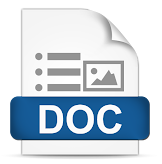Bata Ilyas Journal of Accounting have a policy of screening for plagiarism. We use Anti-Plagiarism Software by Turnitin to check the authenticity article
Guideline for Preparing Manuscript
Types of paper
-
Original articles:
These include population-based surveys, program evaluations, impact assessment studies, randomized controlled trials, intervention studies, studies of screening and diagnostic tests, outcome studies, cost-effectiveness analyses, meta-analysis, systematic reviews, cohort studies, and case-control studies. The text of original articles amounting to up to 3000 words (excluding Abstract, references, and Tables) should be divided into sections with the headings Abstract, Key-words, Introduction, Material and Methods, Results, Discussion, References, Tables and Figure legends. -
Review Articles:
It is expected that these articles would be by invitation, written by individuals who have done substantial work on the subject or are considered experts in the field. Articles by other public health experts can be accepted on the basis of merit of the article. A short summary of the work done by the contributor(s) in the field of review/their area of expertise should accompany the manuscript. -
Brief Research article
Brief Research article should contain interesting observations/ brief reports of original studies presenting the authors' views on a topic of current interest. The purpose of a brief research article in Economic and Digital Business Review Journal is to provide additional insights into topics of current sciences, engineering, and education concerns. It should be limited to 1,500 words with an unstructured summary not exceeding 150 words, no more than two tables and/or figures, and no more than 10 references. It could be authored by up to six authors.
Manuscript Format
The manuscript should be uploaded to the journal system and must consist of Title, Authors, Address and Email, Abstract, Keywords, Introduction, Materials and Methods, Result and Discussion, Conclusion, Acknowledgment, and References.
The Title
The title of the paper should be concise and informative. Avoid abbreviations and formulas where possible. It should be written clearly and concisely describing the contents and results of the research.
Authors
The manuscript has the main author and co-authors with the full name of the author and co-authors (no abbreviation), includes the affiliations and only one email for correspondence.
Abstract
The abstract should give readers concise information about the content of the article and indicate the main results obtained and conclusions are drawn. The abstract is not part of the text and should be complete in itself; no table numbers, figure numbers, references, or displayed mathematical expressions should be included. It should be suitable for direct inclusion in abstracting services. It should not exceed 200 words and written in a single paragraph. Since contemporary information-retrieval systems rely heavily on the content of titles and abstracts to identify relevant articles in literature searches, great care should be taken in constructing both.
Keywords
Immediately after the abstract, provide a maximum of 5 (five) keywords (phrases), using the English language, avoid general and plural terms and multiple concepts (avoid, for example, 'and', 'of'). Take good care with abbreviations: only abbreviations firmly established in the field may be eligible. These keywords will be used for indexing purposes. Keywords should be alphabetical order.
Introduction
State the objectives of the work and provide an adequate background, avoiding a detailed literature survey or a summary of the results. However, a gap analysis is required in this part of the article. Explain how you addressed the problem and clearly state the aims of your study. As you compose the introduction, think of readers who are not experts in this field.
Literature Review
Related work of previous researchers should be presented. Minimum 10-15 good and recent works should be presented. This section can be merged with introduction section as well. Here author can discuss the research gap that this study is going or willing to cover. Provide intext citation in APA style. (Harris, M. 2001)
Research Methods
Present the materials, methods, survey, questionnaire etc. used for the study. Author should explain whether this study is experimental, or review study, or simulation based or survey based. Discuss software, hardware’s used during study with their brand names. Mention all research conditions, assumptions, theories followed. This section should be easy enough for any reader to repeat the study under similar conditions.
Results and Discussions
The result and discussion must be written in the same part. They should be presented continuously start from the main result to the supporting results and equipped with a discussion. The unit of measurement used should follow the prevailing international system. Avoid extensive citations and discussion of published literature.
Conclusions
The main conclusions of the study may be presented in a short Conclusions section, which may stand alone or form a subsection of a Discussion or Results and Discussion section. Suggestion placed after the conclusion contains a recommendation on the research done or an input that can be used directly.
Acknowledgment
The acknowledgment is in a separate section at the end of the article before the references and does not include on the title page, as a footnote to the title or otherwise. List here the sponsors or individuals who provided help during the research (e.g., providing language help, writing assistance or proofreading the article, etc.).
References
A complete reference using the APA style should provide the reader with enough information to locate the article concerned, whether published in print or electronic form and should, depending on the type of references.
Example :
- Journal article
Harris, M., Karper, E., Stacks, G., Hoffman, D., DeNiro, R., Cruz, P., et al. (2001). Writing labs and the Hollywood connection. Journal of Film Writing, 44(3), 213–245.
- Article by DOI
Slifka, M. K., & Whitton, J. L. (2000) Clinical implications of dysregulated cytokine production. Journal of Molecular Medicine, https://doi.org/10.1007/s001090000086
- Book
Calfee, R. C., & Valencia, R. R. (1991). APA guide to preparing manuscripts for journal publication. Washington, DC: American Psychological Association.
- Book chapter
O’Neil, J. M., & Egan, J. (1992). Men’s and women’s gender role journeys: Metaphor for healing, transition, and transformation. In B. R. Wainrib (Ed.), Gender issues across the life cycle (pp. 107–123). New York: Springer.
- Online document
Abou-Allaban, Y., Dell, M. L., Greenberg, W., Lomax, J., Peteet, J., Torres, M., & Cowell, V. (2006). Religious/spiritual commitments and psychiatric practice. Resource document. American Psychiatric Association. http://www.psych.org/edu/other_res/lib_archives/ archives/200604.pdf. Accessed 25 June 2007.
* Journal names and book titles should be italicized.
For more detail guidelines for Referencing, visit https://aut.ac.nz.libguides.com/APA6th/referencelist



